Dietmar Rothermund and Harman Kulke state that the non-revolutionary transfer of power from the British Empire to the Indian Republic enabled it to inherit intact the instrumentalities of governance like the armed forces and the civil and police bureaucracies. The new born republic was beset with the trauma of partition and the First war in J&K and thus forced to focus on immediate consolidation. It had little time or energy to transform the colonial instruments to the needs of an Independent Republic. Hence the basic structure and motivational ethos of the armed forces in general and the Indian Army in particular, has remained rooted in the colonial context. The British had organized the Indian Army on the basis of ethnicity/ sub- nationality based Regiments .The trauma of the First War of Independence had led them to discontinue all recruitment from the present day states of Bengal, Bihar and most of UP. These native troops (who had once formed the backbone of the Mauryan Army that had first unified India politically in 330 BC era) were declared “non-martial” and excluded from further recruitment. Also dispensed were the troops from the South that had formed the backbone of the Madras Presidency Army. Lord Roberts of Kandahar propagated his martial race theory and the entire recruitment bias of the British Indian Army was switched to North and North West India. The Sikhs, the Punjabi Musalmans and the Gurkhas (who had largely stayed out of the 1857 struggle) formed the bulk of this new colonial Army. We thus saw the formation of ethnicity based Regiments like the Sikhs, Jats, Marathas, Dogras Rajputs, Kumaonis, Garhwalis and Gurkhas who were deemed martial classes. The primary concern of the British Indian Army was to sanitise this force and ensure that no nationalist sentiments would ever arise in this colonial instrument .There would be no repetition of 1857 and this colonial army would faithfully obey orders to shoot at its own citizenry whenever necessary. To that extent the very idea of India as a unified entity was anathema to the British. Nationalism was a dangerous word in the ranks of the colonial military. The entire basis of military motivation was therefore focused around the Izzat/ honour and martial traditions of the sub nationality based Regiment. The pride in the “quam” (sub nationality) was the primary basis of the military motivational ideology. The history and achievements of the “quam” were used to inspire the soldiery. Such a motivational ideology by itself would obstruct the emergence of nationalist sentiments based on fashioning a pan-Indian identity. The critical question is that six decades after Independence why are we still fixated on a colonial model of military motivation designed to curb nationalism and encourage a plethora of regional, ethnic and sub national identities?
In practical terms the British colonial, martial race based recruitment model proved too narrow to support a large army. It broke down in the First World War when the colonial army had to be rapidly expanded from 350,000 to 1.1 million men. A large number of non-martial classes like the Mahzbi Sikhs, Mahars and allied scheduled caste ethnicities had to be per force recruited. In the Second World War the British Indian Army had to be expanded to an all time record size of 2.5 million men to fight the Japanese and also contribute troops for Europe and North Africa theatres. The martial class recruitment base completely broke down and very large number of non-martial class soldiers had to be recruited. The Bihar regiment was once more a part of the British Indian Army along with a whole host of castes and communities that had earlier been labeled non-martial. The martial class narrative as a basis of military motivation had, in practice, failed to meet the needs of a very large army even before Independence.
Post Independence Developments
In theory the Martial Race concept was debunked after Independence but continued in practice to form the basis of Regimental motivation. Recruitment was thrown open on all India all class basis. However the legacy Regiments were retained to prevent organizational turbulence and the simple fact was that the Martial race oriented model had become deeply engrained in the psyche of the Army. No need was felt to disturb functional organizations that had performed well in the war. Three types of Units were now retained:-
* Single Class Regiments e.g. The Sikhs, Dogras, Jats, Marathas etc.
*Fixed Class Regiments e.g. the Grenadiers, and the Punjab Regiment etc with fixed class composition (like two Company Dogras, two Companies Jats and Dogra/ Sikhs combinations etc)
*All India All Class These had a heterogeneous mix of all Indian castes/ classes. All new Regiments e.g. Paras, Guards, Mechanised Infantry etc that were raised post independence were on this mixed model and have performed very well.
Gen Rodrigues Era Reforms
Post Operation Blue Star, mutinies in some battalions of the Sikh and Punjab Regiment sharply underlined the perils of over reliance on sub nationality or ethnicity based Regiments and systems of motivation in the present day context when insurgencies are largely focused on ethnic identities. However Gen Rodrigues attempts to breakdown existing ‘Fixed class’ Infantry Regiments into heterogeneous compositions by deliberately mixing sub units of different Regiments were deeply resented as they disrupted the historic continuity of organizational entities with long histories of corporate existence and collective memories of inspiring battle performances. This experimental reform process was deeply resented in the Army and was revoked a few years down the line. Its basic flaw was trying to mix sub units of existing Regiments rather than trying to organically grow new units of mixed compositions. It missed the essential point altogether. The Basic problem was NOT with the composition but the emphasis on ethnicity for motivation. Units can be formed on regional basis to ease administrative/ functional problems. However what is of essence is their basic motivational philosophy. Is it based on regional chauvinism or on a larger theme of Nationalism and Patriotism – the aggressive promotion of a pan- Indian identity? The honest fact is that the colonial culture that was deeply suspicious of any Nationalist sentiment in the Army unfortunately persists as a historical anachronism. Some officers at the highest levels still claim that the Indian Army fights not for the country or any patriotic fervor but for the Izzat of the Paltan -the ethnicity based Regiment. Such an attitude is a clear hangover of the Raj period and its colonial narrative that emphasized regional identities to prevent the emergence of nationalism in a colonial Army. There is a need to understand and transform this cultural context and outgrow the anachronisms of a colonial Past.
Nationalism as Basis of Combat Motivation
The British had superimposed their own Regimental model based on regional/ethnic identities (Scots, Irish Guards etc) on the British Indian Armies. Most Western Armies base their Regiments on such regional basis and limit motivational narratives to the unit/ Regimental level. However the Germans and the Japanese and to an extent the Russians, based their motivational themes on a highly aggressive promotion of militant nationalism. The motivational focus was placed on the highest organizational entity – the Nation State itself and not anything lower. All else was secondary. The highest loyalty, the highest cause was the nation state. This served as a common theme for motivation across organizational boundaries – the Army, Navy, Air force and Marines all subscribed to a common motivational ideology that stressed not regional but a pan-national identity. This facilitated Inter services coordination and synergy. Militant nationalism served as a highly effective basis of combat motivation in World War II. Post war evaluation of Allied and German /Japanese military unit performances indicated that the German Whermacht and the Imperial Japanese Armies( even though they lost the War due to overall asymmetry of industrial resources that the US entry into the war generated) proved to be the more efficient and effective armies. American studies have indicated that German units decimated to the extent of 80% still retained their combat cohesion in World War II. Field Marshal Slim had lamented that “We all talk of fighting to the last man and last round – the Japanese are the only ones who do it”. The Kamikaze suicide pilots bear testimony to the very high levels of combat motivation in the Japanese Armed Forces. Thus Militant Nationalism as a basis for combat motivation has worked in a most effective way in past wars. It generates tremendous organizational coherence and a high degree of motivation. It creates the inspirational climate that fosters extremes of sacrifice. It is a well tried and tested model with proven battle field validity. We could not adopt it in the past – because we were a colonial Army. 60 years after Independence – what is it that prevents us from adopting this combat validated model?
In Mar 2006, a Vietnamese Army delegation had visited HQ Eastern Command of the Indian Army. One of the Vietnamese Generals was keen to know what the Indian Army did for Patriotism Training. The look of astonishment on his face when he was told that we do nothing of this kind but rely on the Regimental system to motivate our men, will long haunt me personally. The Vietnamese Generals insight deserves to be reflected upon. The organizational need is to outgrow the cultural context of colonialism and find our moorings as a nation state and future power to reckon with.
An Alternative Indian Model: Learning From the INA
Gen Shankar Roychowdhury, when he was the Chief, highlighted the need to transform the Indian Army’s motivational methodology to this militant Nationalism model that emphasizes Patriotism and aggressive championing of a pan-Indian identity. He suggested that the Indian National Army of Subash Chandra Bose provided a readymade model for the Indian context. It had tried to apply the German and Japanese techniques of military motivation to the Indian context with considerable success. The simple fact is that most of our Post –Independence efforts to Indianise the Indian Army are borrowed from the INA. “Jai Hind” our salutation comes from the INA. Gen Roychowdhury had decreed that the INA Marching Song of ‘Kadam Kadam Barhaye Ja ‘ be played at the Passing Out Parades (POP) of the IMA and OTA and at all POPs of the recruits at the Regimental Centers. This was a step in the right direction and the practice is still in vogue. The INA is a very vibrant and extant model that needs much greater study and analysis. Anton Pelinka writes “Bose was certainly always a nationalist. For him the Indian nation was an idea, the anti-thesis of the princely state and the caste system, the religious struggle and linguistic conflicts and above all the anti-thesis of Jinnaha’s theory of two nations”.
The INA had strength of 1500 officers and 60,000 men. It was organized into Three Divisions, Command Troops (to include Special Forces, Armored and Anti Aircraft units, Transport and Logistics troops). It had an Officers Training School and a Women Regiment (Rani of Jhansi Regiment). The First and Second Division saw action in Burma and the Third was deployed in Malaya. In Burma the INA Division fought along with the Japanese 15th, 31st, and 33rd Divisions in Manipur, Kohima and Imphal respectively and then took part in the difficult retreat across Burma (especially the Battles of Mektila and Irrawaddy crossing) Morale and motivation across formations and Units was not uniform and some units formed of surrendered Indian Army POWs did not do as well as those raised de novo and trained by the Japanese. The best performance perhaps was at Mount Popa where an INA company fought bravely against a British Tank assault with petrol bombs. The astounding fact is that overall the INA took 26,000 casualties in World War II. This accounts for almost 43% casualties. Yet most INA Units had retained their combat cohesion till the end of the War. Sustaining morale in a retreat is a very difficult proposition. The INAs motivational philosophy clearly enabled it to do so. The INA had come too late when the tide of war had already turned. Nevertheless, its overall impact on the Indian Freedom movement was far greater than is realized and is deemed by many as instrumental in shaping the British decision to leave India. Even in defeat it inspired victory.
The INA Indianised many German and Japanese techniques of military motivation and emphasized militant Nationalism. Though both German and Japanese models do have a negative resonance and may appear somewhat anachronistic yet some of their concepts could be modified to suit modern Indian conditions.
Today there is a need to emulate the INA model with perhaps some modifications. We need the following:-
* Heavy emphasis on nationalism at the entry levels of the NDA, IMA and OTA which are foundational in their impact. The courses must commence with a Motivational Capsule of a week before main training commences. It must rely on a capsule of Indian History, Indian Military Traditions and Post-Independence achievements. It must rely upon motivational films and inspiring war movies to provide role models and include talks by Gallantry award winners.
* There is a motivation training capsule in the current Recruit Training Syllabus. It comes in the middle of the training regime at Regimental Centers. This needs to be made the start point of recruit training. Heavy emphasis must be laid on emphasizing the Indian ethos, the Regimental History and Films on Regimental military Heroes and award winners who can act as role models for the young soldiers. Heavy emphasis must be laid on Community singing of Patriotic songs, marching songs and singing with military bands. European armies have traditionally used community singing as a powerful motivational tool.
* Middle and Senior Officers must be encouraged to study Indian History (especially Indian Military History) and capsules on the organizational culture, ethos and motivational philosophy must be run at the basal courses at the Army War College and College of Defense Management.
* There is a need to outgrow the colonial context in our organizational culture and transit to a ‘Nationalism’ model that emphasises loyalty to the highest organizational entity of the Nation State. Such a similarity of motivational context across organizational boundaries will promote Inter-services synergy and coordination. Different services will then place the National interest above parochial service loyalties as a deeply ingrained habit of thought. This is a combat validated model that worked brilliantly in the Second World War and is still practiced by the Vietnamese and Israeli Armed Forces. In the INA we have a readymade model of motivation customized for the Indian context.
--------------------------------------
Published Date : 25 June 2011

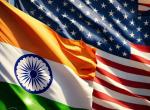
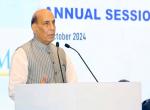
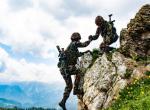
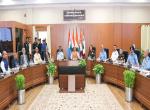
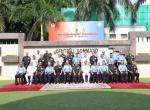


Post new comment